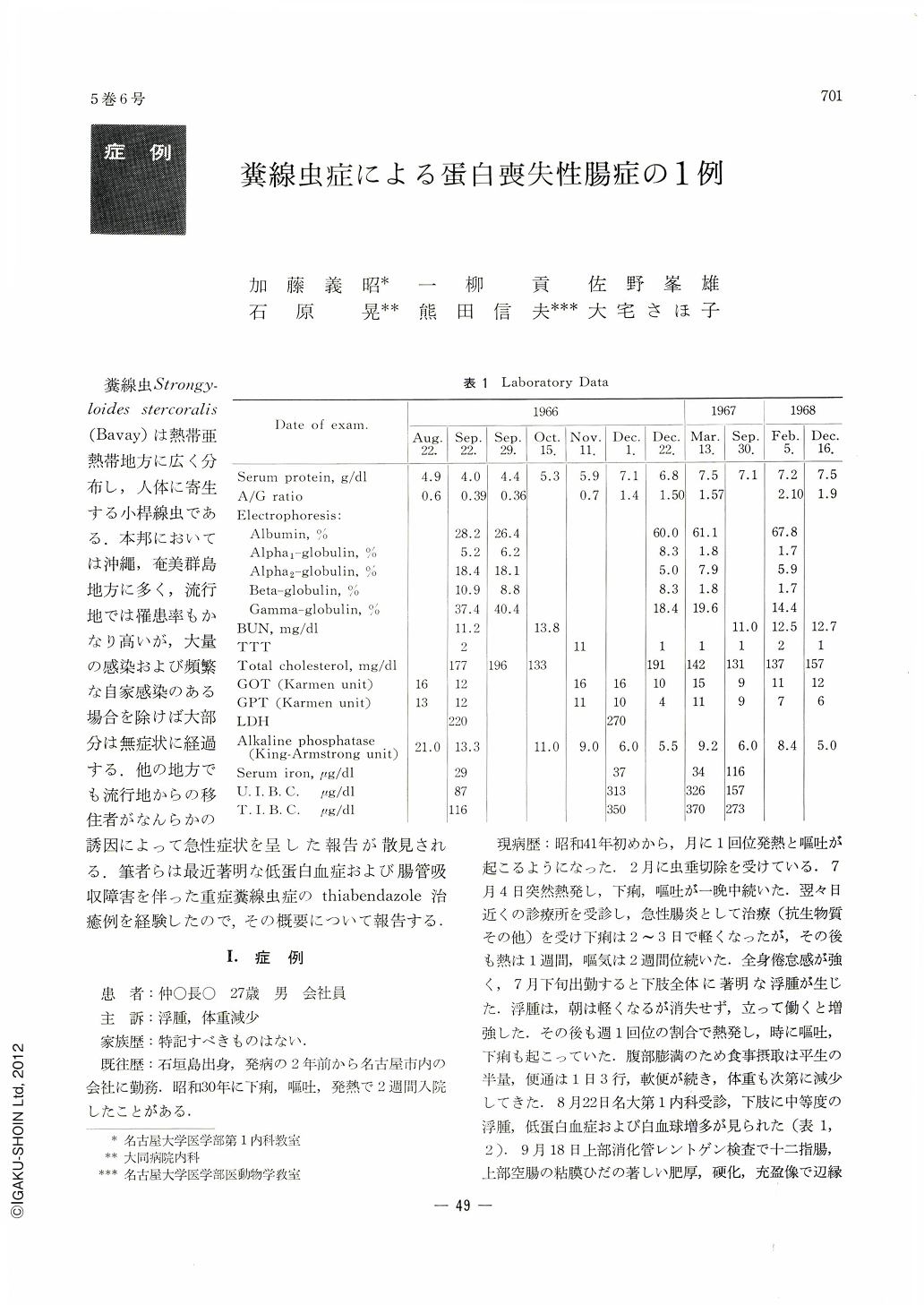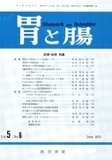Japanese
English
- 有料閲覧
- Abstract 文献概要
- 1ページ目 Look Inside
糞線虫Strongyloides stercoralis(Bavay)は熱帯亜熱帯地方に広く分布し,人体に寄生する小桿線虫である.本邦においては沖縄,奄美群島地方に多く,流行地では罹患率もかなり高いが,大量の感染および頻繁な自家感染のある場合を除けば大部分は無症状に経過する.他の地方でも流行地からの移住者がなんらかの誘因によって急性症状を呈した報告が散見される.筆者らは最近著明な低蛋白血症および腸管吸収障害を伴った重症糞線虫症のthiabendazole治癒例を経験したので,その概要について報告する.
A 27-year-old man from Ishigakijima Island was hospitalized due to edema, weight loss and abdominal pain. On physical examination, distension of the upper abdomen, clubbed fingers and leg edema were noted. Radiologic examination of the upper gastrointestinal tract revealed a severe inflammatory change of the duodenum and the proximal part of the jejunum and moderate dilatation and thickening of the mucosal folds of the remaining segment of the small intestine. By the detection of the rhabditiform larvae of Strongyloides stereoralis in feces and duodenal fluid, these changes were considered to be produced by strongyloidiasis. Serum protein level was 4.0 g/dl, A/G ratio 0.36 and T. I. B. C. 116 μg/dl. Half-life of I. V. administered RIHSA was reduced to 3.9 days, fecal fat was 14 g daily and oral glucose tolerance test showed a diabetic curve. From these results, it was concluded that the patient had malabsorption and protein losing enteropathy due to strongyloidiasis. Soon after the treatment with thiabendazole (25 mg/kg body weight, twice daily for 2 days), gastrointestinal trouble disappeared without noticeable side reaction except transient minimal edema on legs. He rapidly gained weight and the results of examinations performed around 1 month after therapy were remarkably improved. Five months later were larvae again detected in feces without any symptom, and retreatment was done with doubled dosis of thiabendazole. Since no larvae had been found on repeated examinations of feces and duodenal fluid for 1 1/2 years thereafter, the patient was regarded as completely cured.

Copyright © 1970, Igaku-Shoin Ltd. All rights reserved.


